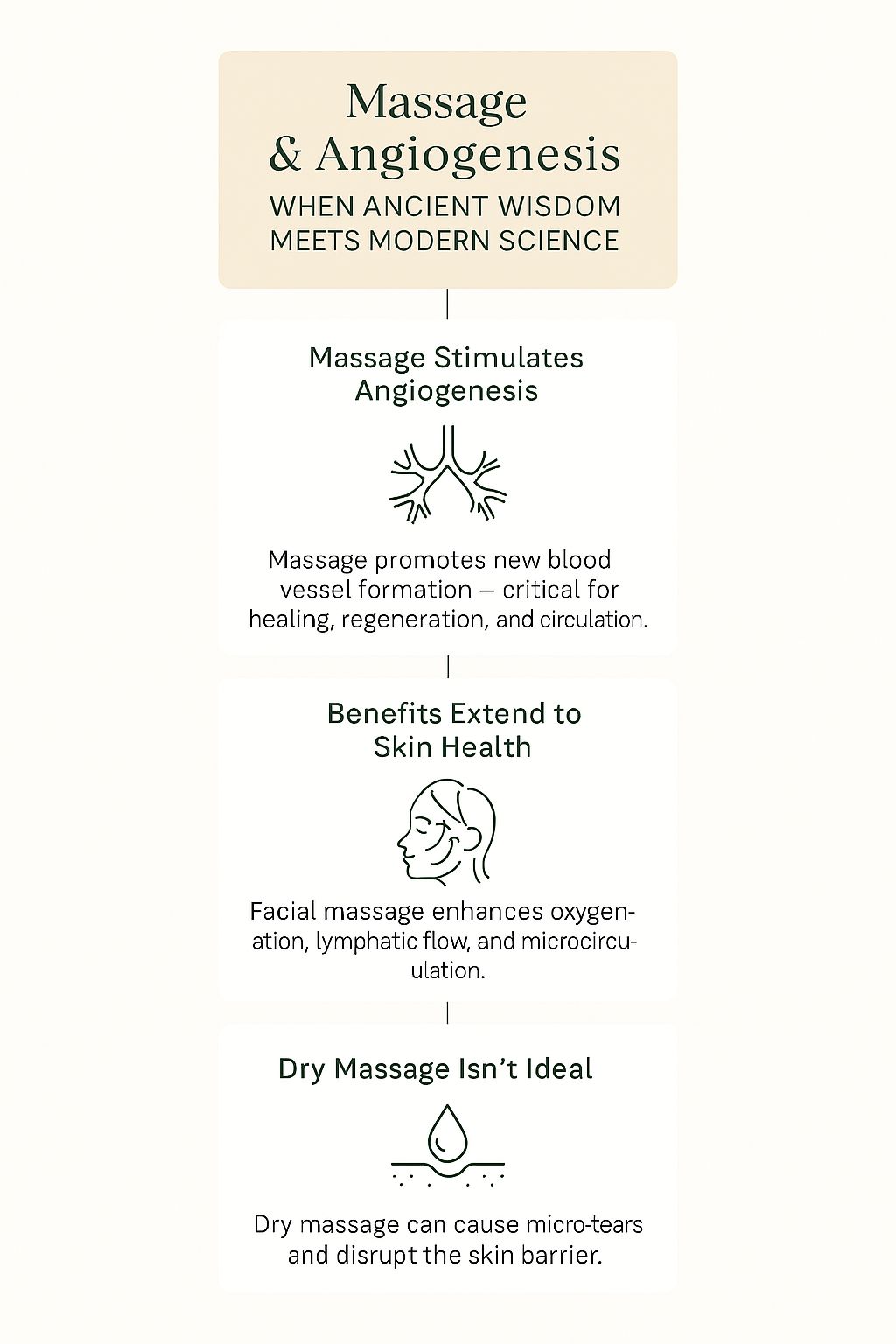
Massage & Angiogenesis:
When Ancient Wisdom Meets Modern Science
For decades, massage was sidelined by Modern Medicine — often viewed as anecdotal, indulgent, even irrelevant to serious science.
But research now tells a different story.
We now know that massage stimulates angiogenesis — the formation of new blood vessels — a critical process for tissue regeneration, improved circulation, and healing. From post-operative recovery to chronic inflammation, this mechanism has real, measurable impact.
And yet — the benefits extend far beyond clinical application.
Regular facial massage, for instance, enhances oxygenation, improves lymphatic flow, and supports vascular health. But one key element is often overlooked:
The medium matters as much as the method.
Dry massage can increase friction, cause micro-injuries, and compromise the skin barrier — especially on delicate facial skin.
But when paired with the right oil — one that mimics the skin’s own lipid profile and supports barrier healing — massage becomes more than a ritual. It becomes a regenerative act.
Barrier-supportive oils don’t just provide glide; they actively reinforce skin resilience and hydration, enhancing the very angiogenic pathways massage is meant to stimulate.
As someone working in tissue engineering and regenerative biomaterials, I find it deeply validating that ancient Indian practices — from abhyanga to mukh lep — intuitively understood these mechanisms long before we could measure them in labs.
That’s the philosophy we leaned into while formulating RESET — a biomimetic oil cleanse designed to do more than dissolve dirt or SPF. It respects the skin’s barrier, supports microcirculation, and turns even a 2-minute massage into meaningful cellular care.
We’re not just revisiting tradition.
We’re proving it — cell by cell, vessel by vessel.


